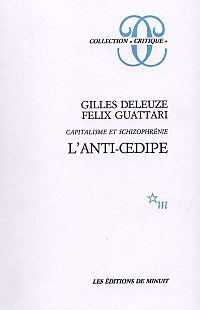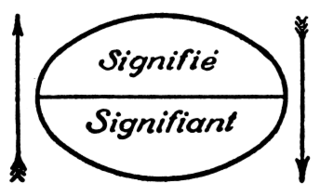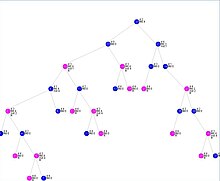
Pierre-Félix Guattari was a French psychoanalyst, political philosopher, semiotician, social activist, and screenwriter. He co-founded schizoanalysis with Gilles Deleuze, and ecosophy with Arne Næss, and is best known for his literary and philosophical collaborations with Deleuze, most notably Anti-Oedipus (1972) and A Thousand Plateaus (1980), the two volumes of their theoretical work Capitalism and Schizophrenia.

Gilles Louis René Deleuze was a French philosopher who, from the early 1950s until his death in 1995, wrote on philosophy, literature, film, and fine art. His most popular works were the two volumes of Capitalism and Schizophrenia: Anti-Oedipus (1972) and A Thousand Plateaus (1980), both co-written with psychoanalyst Félix Guattari. His metaphysical treatise Difference and Repetition (1968) is considered by many scholars to be his magnum opus.
Schizoanalysis is a set of theories and techniques developed by philosopher Gilles Deleuze and psychoanalyst Félix Guattari, first expounded in their book Anti-Oedipus (1972) and continued in their follow-up work, A Thousand Plateaus (1980).

A Thousand Plateaus: Capitalism and Schizophrenia is a 1980 book by the French philosopher Gilles Deleuze and the French psychoanalyst Félix Guattari. It is the second and final volume of their collaborative work Capitalism and Schizophrenia. While the first volume, Anti-Oedipus (1972), was a critique of contemporary uses of psychoanalysis and Marxism, A Thousand Plateaus was developed as an experimental work of philosophy covering a far wider range of topics, serving as a "positive exercise" in what Deleuze and Guattari refer to as rhizomatic thought.

Anti-Oedipus: Capitalism and Schizophrenia is a 1972 book by French authors Gilles Deleuze and Félix Guattari, the former a philosopher and the latter a psychoanalyst. It is the first volume of their collaborative work Capitalism and Schizophrenia, the second being A Thousand Plateaus (1980).
In critical theory, deterritorialization is the process by which a social relation, called a territory, has its current organization and context altered, mutated or destroyed. The components then constitute a new territory, which is the process of reterritorialization.
Reterritorialization is the restructuring of a place or territory that has experienced deterritorialization. Deterritorialization is a term created by Deleuze and Guattari in their philosophical project Capitalism and Schizophrenia (1972–1980). They distinguished that relative deterritorialization is always accompanied by reterritorialization. It is the design of the new power. For example, when the Spanish conquered the Aztecs, and after the Spanish deterritorialized by eliminating the symbols of the Aztecs' beliefs and rituals, the Spanish then reterritorialized by putting up their own beliefs and rituals. This form of propaganda established their takeover of the land. Propaganda is an attempt to reterritorialize by influencing people's ideas through information distributed on a large scale. For example, during World War I, the U.S. put up posters everywhere to encourage young men to join the military and fight.
Affect is a concept, used in the philosophy of Baruch Spinoza and elaborated by Henri Bergson, Gilles Deleuze and Félix Guattari, that places emphasis on bodily or embodied experience. The word affect takes on a different meaning in psychology and other fields.
Minority is a philosophical concept developed by Gilles Deleuze and Félix Guattari in their books Kafka: Towards a Minor Literature (1975), A Thousand Plateaus (1980), and elsewhere. In these texts, they criticize the concept of "majority". For Deleuze and Guattari, "becoming-minor(itarian)" is primarily an ethical action, one of the becomings one is affected by when avoiding "becoming-fascist". They argued further that the concept of a "people", when invoked by subordinate groups or those aligned with them, always refers to a minority, whatever its numerical power might be.
Desiring-production is a term coined by the French thinkers Gilles Deleuze and Félix Guattari in their book Anti-Oedipus (1972).
Plane of immanence is a founding concept in the metaphysics or ontology of French philosopher Gilles Deleuze.

Capitalism and Schizophrenia is a serial composed of two volumes, Anti-Oedipus and A Thousand Plateaus. It was written by the French authors Gilles Deleuze and Félix Guattari, respectively a philosopher and a psychoanalyst, during the May 1968, a period of civil unrest in France.
A line of flight or a line of escape is a concept developed by Gilles Deleuze and Félix Guattari in their work Capitalism and Schizophrenia. It describes one out of three lines forming what Deleuze and Guattari call assemblages, and serves as a factor in an assemblage that ultimately allows it to change and adapt to said changes, which can be associated with new sociological, political and psychological factors. Translator Brian Massumi notes that in French, "Fuite covers not only the act of fleeing or eluding but also flowing, leaking, and disappearing into the distance. It has no relation to flying."
Semiotext(e) is an independent publisher of critical theory, fiction, philosophy, art criticism, activist texts and non-fiction.

Sylvère Lotringer was a French-born literary critic and cultural theorist. Initially based in New York City, he later lived in Los Angeles and Baja California, Mexico. He is best known for synthesizing French theory with American literary, cultural and architectural avant-garde movements as founder of the journal Semiotext(e) and for his interpretations of theory in a 21st-century context. He is regarded as an influential interpreter of Jean Baudrillard's theories, among others.
Virtuality is a concept with a long history in philosophy, its most notable recent version being that developed by French thinker Gilles Deleuze.

In semiotics, signified and signifier are the two main components of a sign, where signified is what the sign represents or refers to, known as the "plane of content", and signifier which is the "plane of expression" or the observable aspects of the sign itself. The idea was first proposed in the work of Swiss linguist Ferdinand de Saussure, one of the two founders of semiotics.
Rhizomatic learning is a variety of pedagogical practices informed by the work of Gilles Deleuze and Félix Guattari. Explored initially as an application of post-structural thought to education, it has more recently been identified as methodology for net-enabled education. In contrast to goal-directed and hierarchical theories of learning, it posits that learning is most effective when it allows participants to react to evolving circumstances, preserving lines of flight that allow a fluid and continually evolving redefinition of the task at hand. In such a structure, "the community is the curriculum", subverting traditional notions of instructional design where objectives pre-exist student involvement.

Francis Bacon: The Logic of Sensation is a 1981 book by philosopher Gilles Deleuze, analyzing the work of twentieth-century British figurative painter Francis Bacon. In this biography, Deleuze discusses aesthetics, objects of perception ('percepts'), and sensation.
Assemblage is a philosophical approach for studying the ontological diversity of agency, which means redistributing the capacity to act from an individual to a socio-material network of people, things, and narratives. Also known as assemblage theory or assemblage thinking, this philosophical approach frames social complexity through fluidity, exchangeability, and their connectivity. The central thesis is that people do not act predominantly according to personal agency; rather, human action requires material interdependencies and a network of discursive devices distributed across legal, geographical, cultural, or economic infrastructures.








